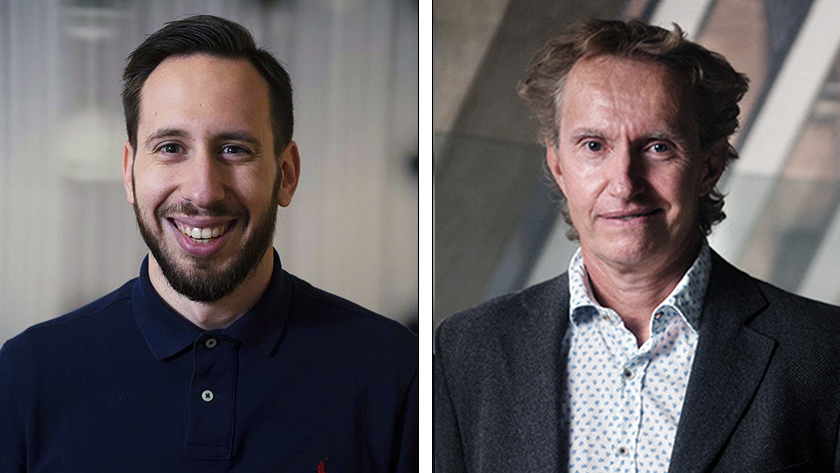
Researchers led by Krembil Brain Institute Senior Scientist Dr. Martin Ingelsson have used CRISPR-Cas9 to tackle a gene mutation that causes early-onset Alzheimer disease.
Alzheimer disease is a progressive brain disorder and the leading cause of dementia worldwide. Despite decades of efforts to develop a cure, most available drugs only treat symptoms and do nothing to stop disease progression.
Genomic studies have revealed that early-onset, familial forms of the disease result from changes in numerous genes, including presenilin 1 (PSEN1). This gene and its corresponding protein, PS1, are involved in the production of amyloid beta (Aβ), which builds up and forms amyloid plaques in the brains of people with Alzheimer disease.
Evangelos Konstantinidis, a recent PhD graduate at Uppsala University and the first author of the study, describes PS1 as part of the molecular scissors that produce Aβ from its precursor protein, resulting in Aβ aggregation into plaques. “The precursor protein can get cut in different spots, forming molecules of different sizes. Gene mutations that alter the structure of PS1 can increase the production of a larger and more aggregation-prone form of Aβ—called Aβ42 for its 42 amino acids, compared to the more prevalent Aβ40.”
The research team used the gene editing technology CRISPR-Cas9 to disrupt a particular mutation in the PSEN1 gene. They did this in fibroblasts—the cells that make up human skin and connective tissue.
Although Alzheimer disease is a condition of the brain, the hallmark increase in Aβ42 levels is present in cells throughout the body of people who carry this mutation.
The team tested their gene editing approach in the laboratory, using cells from six people with the mutation, as well as two healthy family members and two healthy unrelated people.
The gene editing led to a reduction in Aβ42 and partially restored the normal Aβ42/40 ratio. It did this by correcting the shape of the abnormal PS1 protein and lowering its levels.
Importantly, the team did not detect any off-target effects of the gene editing.
“Because we are using molecular tools to identify and delete a specific disease-causing gene sequence, it is possible that we might disrupt similar sequences elsewhere in the DNA,” cautions Dr. Ingelsson. “We examined ten sequences that were most likely to be disrupted, and we saw no changes. This tells us that our approach does a good job of distinguishing between sequences, and it could eventually be a safe and effective treatment for people with this mutation.”
This work was supported by the Swedish Research Council, the Swedish Alzheimer Foundation, the Swedish Brain Foundation, the Åhlén Foundation, the Gamla Tjänarinnor Foundation, the Gun and Bertil Stohne's Foundation, the German Research Foundation, Massachusetts General Hospital, the National Institutes of Health and the UHN Foundation. Dr. Martin Ingelsson is a Scientist at the Tanz Centre for Research in Neurodegenerative Diseases at the University of Toronto.
Konstantinidis E, Molisak A, Perrin F, Streubel-Gallasch L, Fayad S, Kim DY, Petri K, Aryee MJ, Aguilar X, György B, Giedraitis V, Joung JK, Pattanayak V, Essand M, Erlandsson A, Berezovska O, Ingelsson M. CRISPR-Cas9 treatment partially restores amyloid-β 42/40 in human fibroblasts with the Alzheimer's disease PSEN1 M146L mutation. Mol Ther Nucleic Acids. 2022 Mar 28. doi: 10.1016/j.omtn.2022.03.022.
CRISPR-Cas9 gene editing works by precisely cutting DNA at a target location—typically a disease-causing gene sequence—and letting the cell’s natural DNA repair machinery fix the damage.




